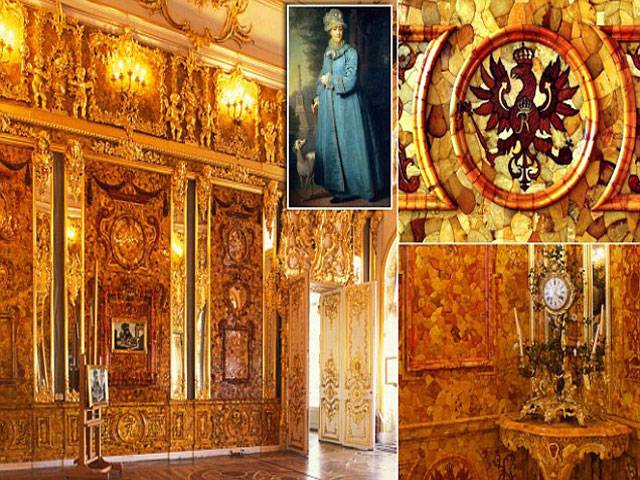MOL
Moscow-With walls that shimmer with gleaming honey-coloured amber and edged with gold, standing in the Amber Room of Catherine the Great feels like being inside a jewellery box.
But while the £300 million decor is striking, what really catches the eye is the story behind the room which comes complete with a cast of Nazis, empresses and treasure hunters.
Stolen by Nazi treasure hunters during the Second World War, the original amber room has never been found - leaving behind a mystery that continues to this day.
Now a BBC One documentary Treasure Hunters hopes to shed some light on the fate of the room’s original furnishings, last seen in the now ruined Königsberg Castle.
The original Amber Room was completed in 1756 and housed in Tsarskoye Selo, a vast palace near St Petersburg that was rebuilt and renovated for Empress Catherine I.
A later expansion under the Empress Elizabeth included the Amber Room, which was used by the Russian royals to entertain and impress foreign guests and dignitaries.
The walls, covered in thousands of individual amber pieces put together to form mesmerising baroque designs, were a real statement of wealth and beauty. For centuries, the Amber Room was a symbol of Tsarist prestige and even survived the Bolshevik revolution. l
But in 1941, disaster, in the shape of the invading Nazi army, struck.
Thanks to their delicacy, the amber tiles that decorated the room couldn’t be moved so the retreating Russians attempted to hide them rather than risk damage. They were papered over, covered in gauze and cotton wool before being boarded up. But the Russians’ gamble failed.
The Nazi’s found the treasure hidden in the walls and within 36 hours they dismantled the entire room, crated it up and it was on its way to Königsberg Castle in Prussia.
Here the trail goes cold. Today Königsberg Castle lies in ruins, with no trace of the glittering treasure once concealed within.
Wednesday, April 17, 2024
Inside the £300 million room

Caption: Inside the £300 million room
Pride and hype as F1 roars back to China after Covid absence
10:36 PM | April 16, 2024
No let-up in Karachi street crime incidents
10:35 PM | April 16, 2024
Stock market today: Most of Wall Street weakens again as Treasury yields rise more
10:34 PM | April 16, 2024
Muslim K-popstar Daud Kim buys land to build mosque in South Korea
10:33 PM | April 16, 2024
Punjab Stadium unavailability derails National Challenge Cup 2023 Final Round
10:28 PM | April 16, 2024
Political Reconciliation
April 16, 2024
Pricing Pressures
April 16, 2024
Western Hypocrisy
April 16, 2024
Policing Reforms
April 15, 2024
Storm Safety
April 15, 2024
Democratic harmony
April 16, 2024
Digital dilemma
April 16, 2024
Classroom crisis
April 16, 2024
Bridging gaps
April 16, 2024
Suicide awareness
April 15, 2024
ePaper - Nawaiwaqt
Advertisement
Nawaiwaqt Group | Copyright © 2024





